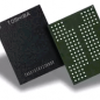Chip manufacturers are speeding up the transition to 96-layer 3d NAND by improving their yield rates. The technology should then become mainstream in 2020. 96-layer 3d NAND offers lower production costs and more storage volume per package.
It is now estimated that in 2019 30 percent of the total production will be ay 96 layers, and in 2020 it should surpass 64-layer production. Of course, they are also already working on 128-layer NAND ;)
Transitioning to 96-layer 3D NAND process technology will help suppliers lower their manufacturing costs and enhance their product competitiveness. Chips built using 96-layer 3D NAND process will account for over 30% of the global NAND flash bit output in 2019. With suppliers stepping up their technology transitions with improvement in their process yield rates, 96-layer NAND flash output is expected to surpass the 64-layer chip output in 2020, the sources indicated. The market for NAND flash memory has been oversupplied this year, the sources said. The chipmakers have been prompted to slow down their capacity expansion pace and even cut back on production to better control their inventory levels. Micron Technology has disclosed plans for a further 10% cutback in its NAND flash output, while SK Hynix estimated its total NAND wafer produced this year would be more than 10% lower than the 2018 level. On anther front, Samsung Electronics reportedly will make adjustments in its production lines in the short term in response to the impact of Japan-South Korea trade disputes. These major NAND chip suppliers' planned production cutbacks will focus on lowering the production ratio for 64-layer 3D and mature products, the sources believe. In addition, many NAND flash chipmakers have already delivered their 120/1288-layer 3D chip samples, according to the sources. Competition among major chipmakers in the race of 128-layer 3D NAND volume manufacturing is set to kick off between the second half of 2019 and 2020.
Chip manufacturers accelerate transition to 96-layer 3D NAND

